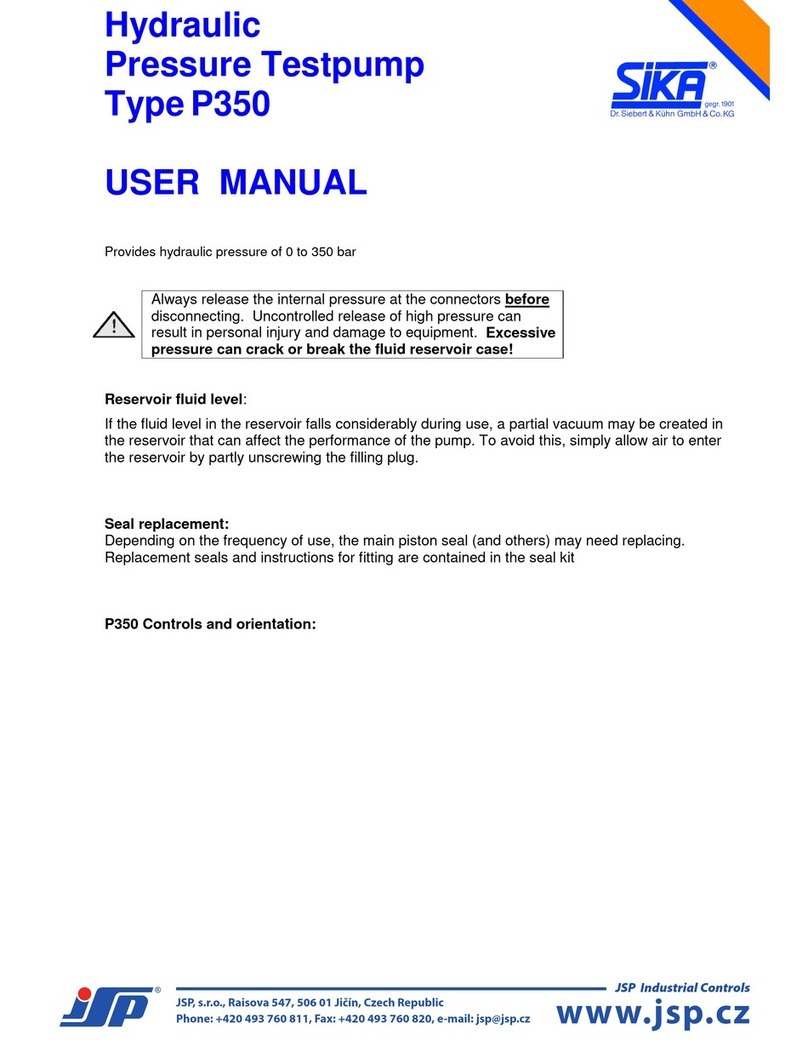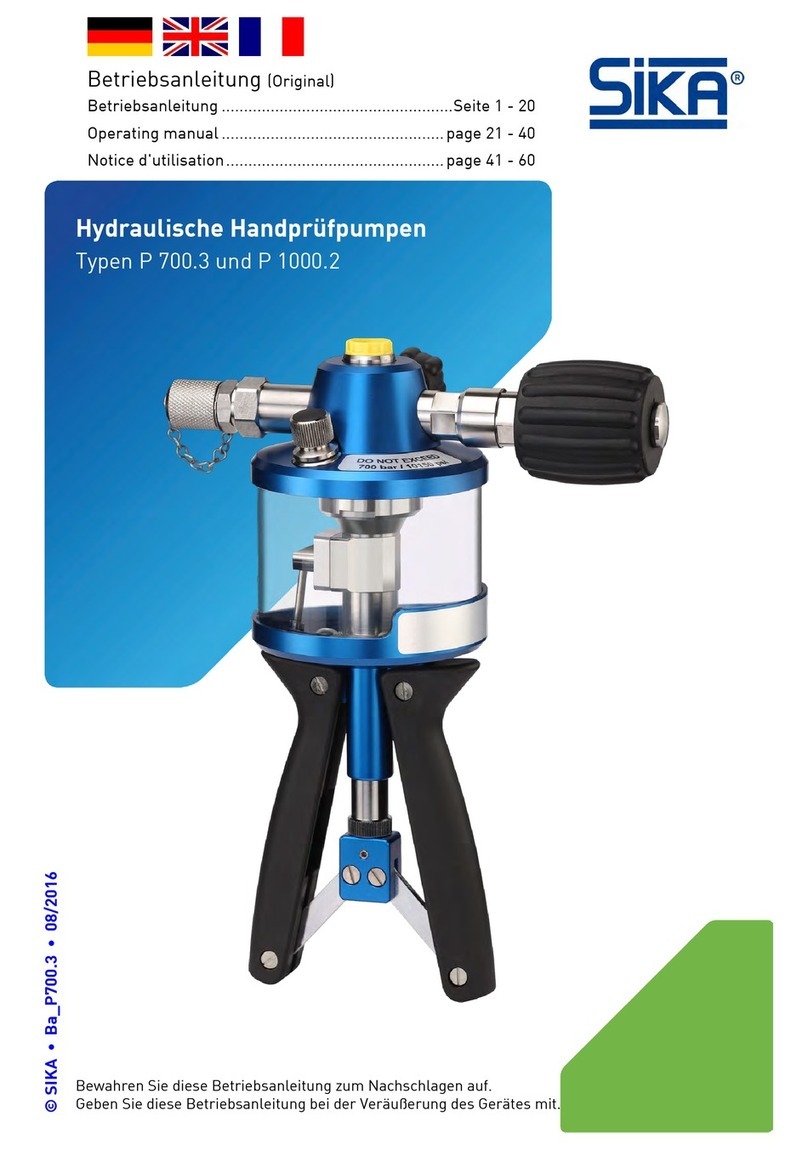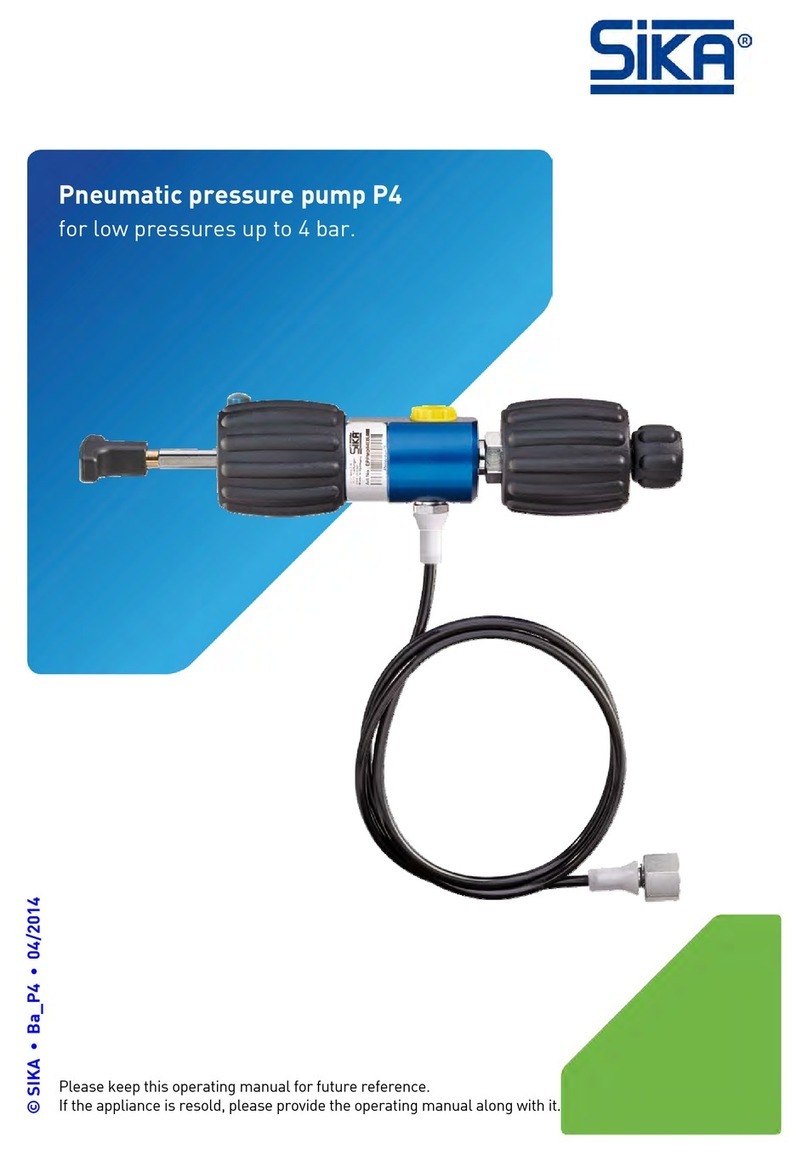Safety instructions P 700 T
© SIKA •Ba_P700T•02/2017
1.2 Intended use
The P 700 T can only be used for generating pressure in low-volume measuring devices. The
device is only designed for use with hydraulic oil, other media will result in damage to the
P 700 T.
The P 700 T may not be attached to external pressure sources.
WARNING! No safety component!
The P 700 T is no safety component in accordance with Directive 2006/42/EC (Machine
Directive).
Never use the P 700 T as a safety component.
The operational safety of the device supplied is only guaranteed by intended use. The speci-
fied limits (§ 9: "Technical data") may under no circumstances be exceeded.
CAUTION! Risk of injury or material damage!
By connecting the P 700 T, the measuring device is hydraulically connected to the
P 700 T. If the pressure relief valve is opened, compressed medium can flow through the
pressure line into the P 700 T's reservoir. At sufficiently large volumes, the reservoir
may overflow.
Never connect the P 700 T directly to the hydraulic system with large volumes (con-
struction machines, etc.) or aggressive medium (such as brake liquid).
Before ordering and installation, check that the P 700 T is suitable for your applications.
1.3 Exclusion of liability
We accept no liability for any damage or malfunctions resulting from incorrect installation,
in-appropriate use of the device or failure to follow the instructions in this operating manual.
2Safety instructions
Before you install the P 700 T, read through this operating manual carefully. If the instruc-
tions contained within it are not followed, in particular the safety guidelines, this could result
in danger for people, the environment, and the device and the system it is connected to.
The P 700 T corresponds with state-of-the-art technology. This concerns the accuracy, the
operating mode and the safe operation of the device.
In order to guarantee that the device operates safely, the operator must act competently and
be conscious of safety issues.
SIKA provides support for the use of its products either personally or via relevant literature.
The customer verifies that our product is fit for purpose based on our technical information.
The customer performs customer- and application-specific tests to ensure that the product
is suitable for the intended use. With this verification all hazards and risks are transferred to
our customers; our warranty is not valid.






























